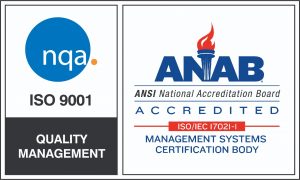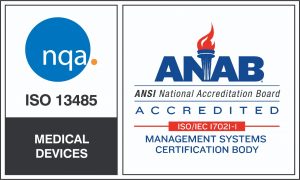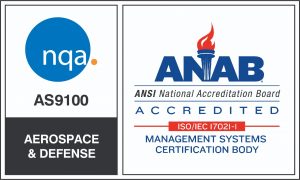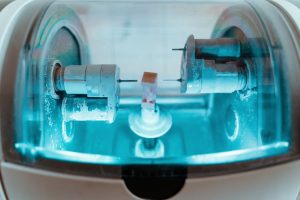 Computer-numerical control (CNC) machining is used for a wide range of projects. This trusted form of metal fabrication provides numerous benefits to businesses across a wide range of industries. From corporate executives to school children, we’ve all encountered devices created with the help of CNC machining. In fact, the creation of most modern-day devices involves this important type of machining.
Computer-numerical control (CNC) machining is used for a wide range of projects. This trusted form of metal fabrication provides numerous benefits to businesses across a wide range of industries. From corporate executives to school children, we’ve all encountered devices created with the help of CNC machining. In fact, the creation of most modern-day devices involves this important type of machining.
Business owners could gain a lot from learning about CNC machining and how it could benefit their business.
What is CNC Machining?
CNC machining uses computer-numerical control to operate machine parts like lathes, routers, grinders, shapers, mills, and more. Unlike other forms of machining, CNC machining does not require a human operator. Because the CNC machine operates under the control of a computer, CNC machining can produce precise and complex parts in very little time.
CNC Machining Benefits
CNC machining allows manufacturers to produce parts faster, reducing time to market and increasing the number of parts they can produce. Another benefit, CNC machining allows for the creation of consistent parts. This eliminates variances which are common with manual production.
Unlike human labor, CNC machines can work continuously This allows manufacturers to meet demanding deadlines. Once programmed, CNC machines only need to stop for occasional service. Although some additional maintenance may be required, most machines only need their cutting elements replaced during service.
CNC Machining Applications
Manufacturers use CNC machines to produce parts for multiple industries. CNC machining works with a broad range of materials including aluminum, stainless steel, carbon, titanium, brass, plastic, wood, gold, silver, and several synthetic materials. CNC machining makes fast work of many essential metal fabrication tasks including:
- Drilling
- Engraving
- Cutting
- Grooving
- Boring
- Contouring
- Lathing
- Milling
- Shearing
- Punching
- Shaping
- Stamping
- Facing
- Grinding
- Threading
- Texturing
- Welding
- Tapping
- Knurling
Multi-Axis Machining
Using multi-axis CNC machines, manufacturers can produce extremely complex parts and components from a solid piece of material. These machines provide additional benefits for organizations looking for precise and detailed components. Multi-axis machines are commonly used to create parts for the aerospace, medical, and defense industries.
Means Engineering provides contract manufacturing services to individuals, small businesses, start-ups, government agencies, and large corporations. Our 5-axis CNC machine allows us to create complex parts for a variety of applications. Please contact us for more information about our CNC machining capabilities.
 Companies looking to expand into new markets often face difficult decisions. While most of these organizations understand the benefits of expansion and the potential for increased revenue, many simply aren’t sure how to acquire the equipment, space, and people needed to grow their business. This is especially true for OEMs and other organizations looking to produce parts or products for the medical, defense, or aerospace industries. These industries have strict requirements, and organizations must prove that they have the equipment and skills needed to meet tight tolerances and produce extremely complex devices.
Companies looking to expand into new markets often face difficult decisions. While most of these organizations understand the benefits of expansion and the potential for increased revenue, many simply aren’t sure how to acquire the equipment, space, and people needed to grow their business. This is especially true for OEMs and other organizations looking to produce parts or products for the medical, defense, or aerospace industries. These industries have strict requirements, and organizations must prove that they have the equipment and skills needed to meet tight tolerances and produce extremely complex devices. 5-axis machining allows for the creation of complex parts or components. While 2-3 axis machines move the work piece in two different directions while the cutting tool moves up and down, 5-axis machines can rotate on two additional rotation axes. This allows the cutting tool to reach the part from all directions. When compared to 2 and 3-axis machines, 5-axis machines offer greater versatility, making them a useful tool to just about every industry.
5-axis machining allows for the creation of complex parts or components. While 2-3 axis machines move the work piece in two different directions while the cutting tool moves up and down, 5-axis machines can rotate on two additional rotation axes. This allows the cutting tool to reach the part from all directions. When compared to 2 and 3-axis machines, 5-axis machines offer greater versatility, making them a useful tool to just about every industry. Several industries rely on CNC machining for the creation of machined components. CNC machines produce complex parts quickly and with a high level of accuracy. Using computerized design processes, manufacturers can inspect parts and products in 3D prior to production. This helps locate issues, saving a considerable amount of time and money. CNC machine tools and accurate computer positioning ensure parts produced meet standards for both quality and consistency.
Several industries rely on CNC machining for the creation of machined components. CNC machines produce complex parts quickly and with a high level of accuracy. Using computerized design processes, manufacturers can inspect parts and products in 3D prior to production. This helps locate issues, saving a considerable amount of time and money. CNC machine tools and accurate computer positioning ensure parts produced meet standards for both quality and consistency.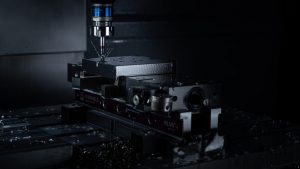 Commonly used to produce complex parts for the aerospace, medical, automotive, and toolmaking sectors, 5-axis machines complete tasks quickly and accurately with only one set-up. Because of the unique capabilities, 5-axis machining makes it possible for companies to expand their offerings and venture into new markets. By taking advantage of 5-axis machining, companies increase their revenue opportunities and gain a better foothold in their market.
Commonly used to produce complex parts for the aerospace, medical, automotive, and toolmaking sectors, 5-axis machines complete tasks quickly and accurately with only one set-up. Because of the unique capabilities, 5-axis machining makes it possible for companies to expand their offerings and venture into new markets. By taking advantage of 5-axis machining, companies increase their revenue opportunities and gain a better foothold in their market.